Musical Performance
Multidisciplinary artist Mark Timmings has been listening to the soundscape produced by the marsh beside his home since he arrived on Saturna Island in 1997. In the spring of 2013 and 2014, he made a series of short field recordings to encapsulate the twenty-four-hour cycle, or circadian rhythm, of the wetland creatures. Soon after, he invited musicologist and neighbour Stephen Morris to collaborate with him on a project to transcribe into music, as precisely as possible, the sounds from these recordings. The musical composition Wetland Senario is a portrait of this endangered soundscape.
Summarizing the conceptual premise of Wetland Senario, Stephen Morris writes: “The term senario derives from Renaissance music theory. It denotes the integers ‘one’ through ‘six’ which, expressed as a series of simple ratios, were believed to represent in the abstract all the musical consonances, or by extension, all the harmony of the universe. Accordingly, as the field recordings were transcribed, each vocal gesture was confined to a ‘hexachord’, or six-note scalar fragment. Each of the work’s three movements represents eight hours of a twenty-four-hour cycle in the natural environment. The movement names are borrowed from the ‘Office Hours’ by which members of a monastic community observe the passing of time. Thus, the first movement is Matins and represents dawn to noon; the second movement is Vespers and represents afternoon and evening; the final movement is Compline and represents the night hours. Implicit in this sequence and these names is the idea that the inhabitants of the wetlands function as a kind of monastic community, preserving, through their ritual observances, the sacredness of the place, and within the passage of time, both constancy and renewal.”
In the writing of Wetland Senario, the role of Stephen Morris and Mark Timmings is essentially restricted to that of scribe. While the piece is a strict chronological transcription of an environmental soundscape, the inclusion of wildlife sound notations in musical composition is not new. Olivier Messiaen (1908–1992), one of the major French composers of the 20th century, was also an ornithologist. His lifelong passion for birdsong led him to notate the calls of the birds he loved and incorporate them into many of his musical compositions, including Réveil des oiseaux “Dawn chorus” (1953), Oiseaux exotiques “Exotic birds” (1956) and Catalogue d’oiseaux “Bird catalogue” (1958). Messiaen was a synesthete: he perceived colour in music and, on occasion, included notations on colour in his scores.
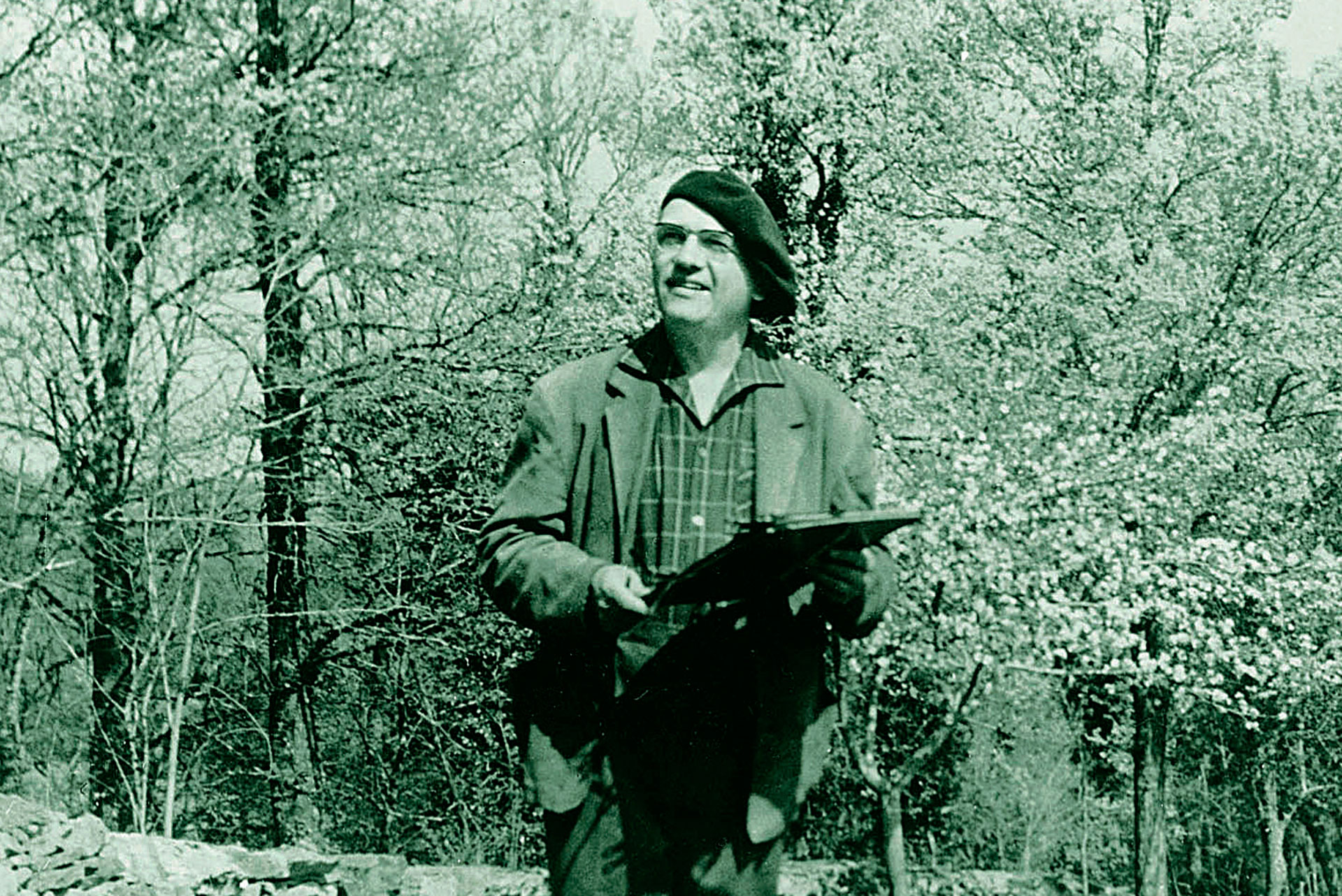
Illuminated Score
Musical scores are an ancient means for organizing information—they are also evocative, archetypal, visual artifacts. Mark Timmings has produced an illuminated version of the Wetland Senario score following the Renaissance tradition of Augenmusik (Eye Music). Two epochs are brought together: the Renaissance and our own world immersed in cyberspace. Illustrating this era we live in, so overburdened with information, the illuminated score is filled with iconographical symbols representing pitch, timbre and dynamic. In this elaborate document, an algorithmic system of colours and shapes replaces traditional musical notation. The note symbols are designed to represent the duration, shape and texture of the sounds produced by the wetland creatures, foghorns and airplanes. They are tinted according to an original colour scale developed for Wetland Senario in which the visible light spectrum is superimposed onto the pitch range in the piece. Thus the scale rises from the lowest notes tinted violet, through shades of blue, green, yellow and orange, to the highest notes tinted red. Dynamic is indicated by the saturation of colour from pale (piano) to vivid (forte).
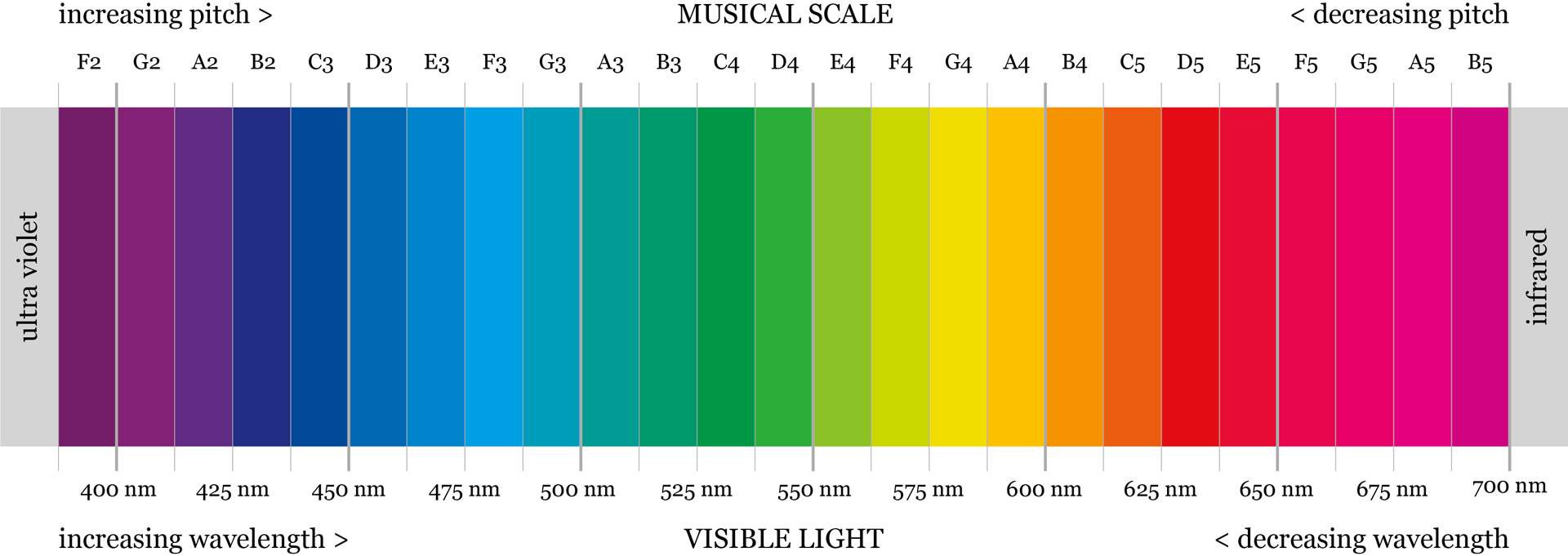
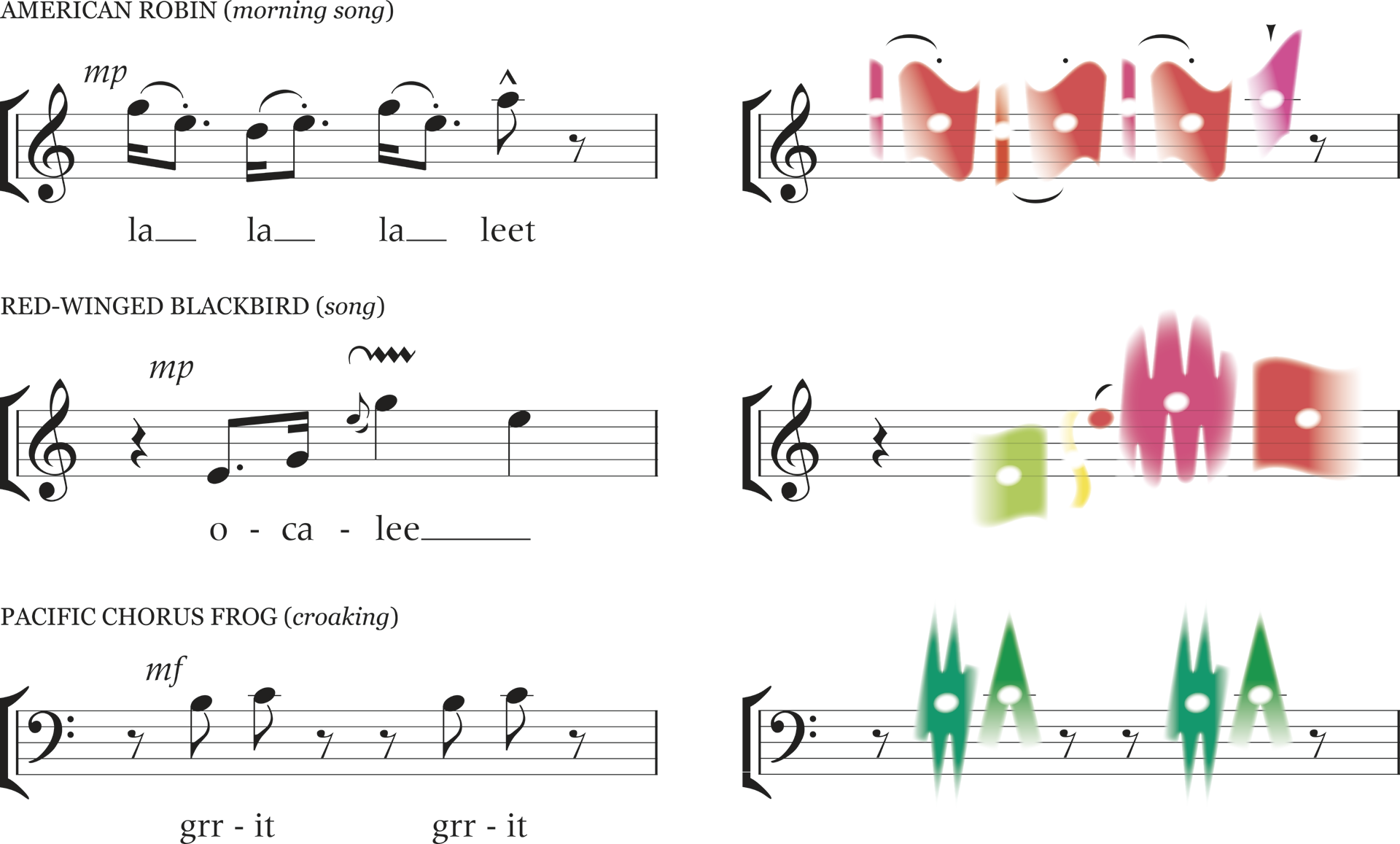
Performance
The performance of Wetland Senario can be approached as an exercise in metamorphosis. Simple mimicking of wildlife sounds is best avoided. The beauty and humour of the calls and songs are transformed into the realm of the human voice or musical instrument performing the composition. In addition to choral performance, Wetland Senario is suited to interpretation by flute choir, woodwind ensemble, or given the rhythmic nature of the piece, by marimba ensemble, with the airplane drones achieved by padded mallet rolls. To recreate the dimensional quality of the environmental soundscape, Wetland Senario is ideally presented with performers dispersed around the concert venue allowing the sounds they produce to flow across the audience from different directions. Experimentation is encouraged.
The initiatory public for Wetland Senario is rooted on Saturna Island where the marsh that inspired the piece is located. The composition, originating from recordings made on Saturna, was premiered there in recognition and gratitude. Under the direction of Sharon Schermbrucker, the Saturna Island Community Choir presented Wetland Senario at the local Community Hall on May 5 and 6, 2017. The performance blurred the boundaries between choir and audience, as both were engaged in ritual: the singers gathered in an act of bearing witness; as did the audience. Together they paid heed to the wetland at a crucial time in its history. Environmental reports state that frogs and songbirds are disappearing. At the same time, airplane drones and other human-made sounds are increasing. The composition’s formal purity emphasizes transparency, truth and fidelity in its approach to the soundscape. In Wetland Senario, the true performer is the wetland itself. Encompassing both singers and beholders, the goal of the Saturna Island performance was to create a new expression of community through celebration of the shared acoustic environment. In its open-ended conceptual structure, Wetland Senario can best be conceived as a piece of performance art.
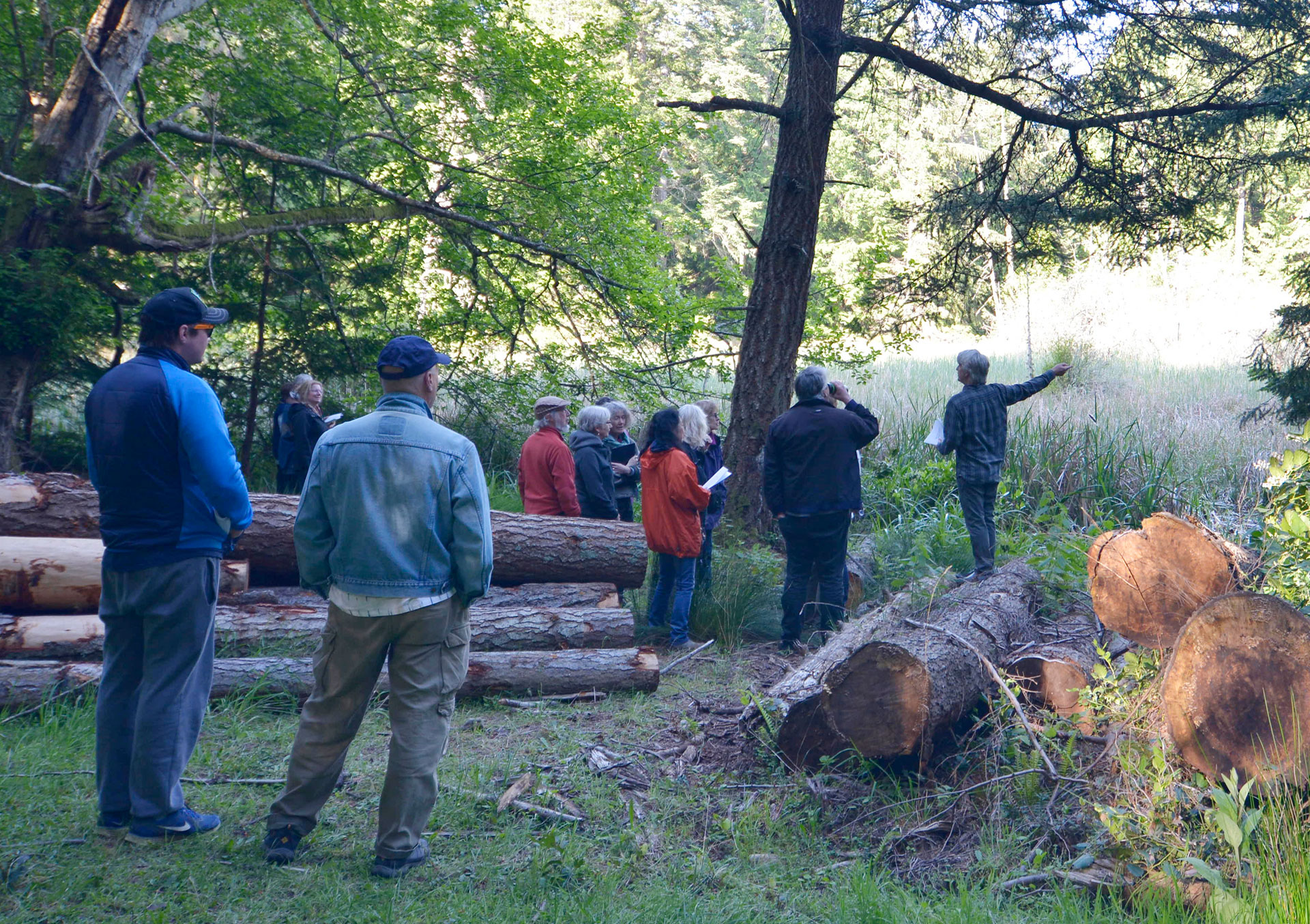
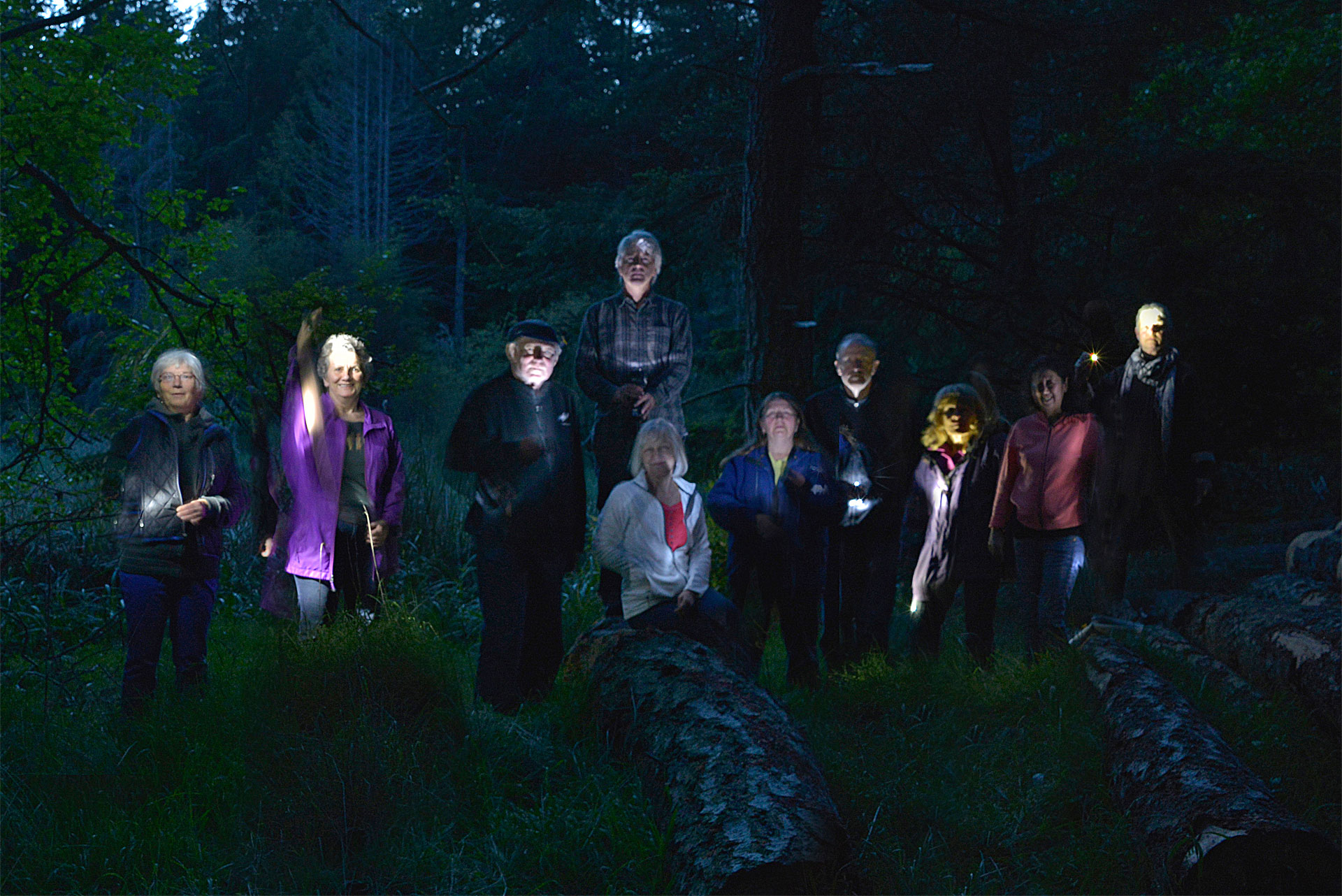
On April 28, 2018, in Vancouver, the Contemporary Art Gallery and Griffin Art Projects presented performances of Wetland Senario by acclaimed vocal ensemble musica intima. Performing in an urban environment highlights other aspects of the work. Although city audiences may lack the concrete knowledge of the specific terrain and immediate identification to place, what emerges is its conceptual nature, pure aesthetic appeal, and ultimately, its activist spirit. As it illustrates the delicate interplay between wilderness environments and urban economies (for example, the wild creatures interacting with the drones of intercity aircraft), Wetland Senario provides an engagement with the environment through listening. It is an exercise in Acoustic Ecology, a discipline which emerged from the World Soundscape Project founded fifty years ago by Canadian composer R. Murray Schafer at Simon Fraser University. Wetland Senario is a tribute to this legacy.
